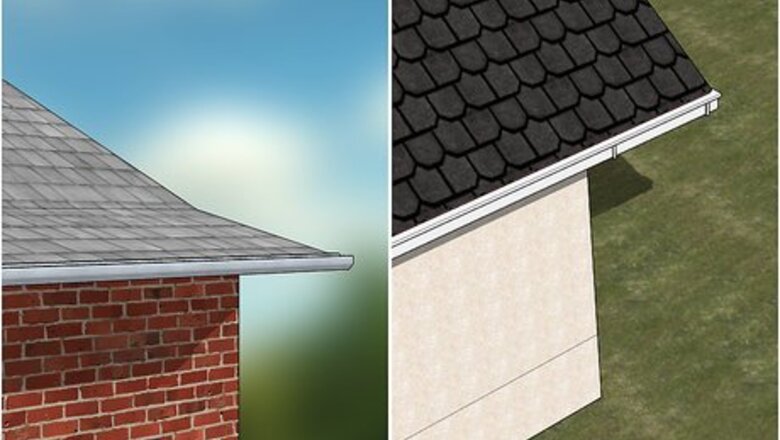
views
Picking a Color for Your Home and Location
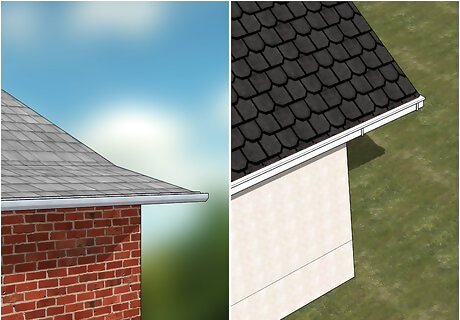
Choose a color that pairs well with the color of your house. Shingles can create contrast with your siding materials, or they can blend in with the other design features of your home. If you want to go the traditional route, stick with gray, brown, or black shingles. For a contrasting pop of color, opt for reddish-orange shades or lighter tan colors. You can also choose to incorporate a mix of colors, like gray and black or tan and brown shingles for a staggered effect. Siding and Shingle Color Combinations If your house is white, gray, yellow, or blue, stick with gray or black shingles to create a stately-looking contrast. For red or yellow brick houses, choose between black, brown, and gray shingles. With natural siding, like stone or earth-toned vinyl, opt for brown or tan shingles to coordinate with the exterior of the home.
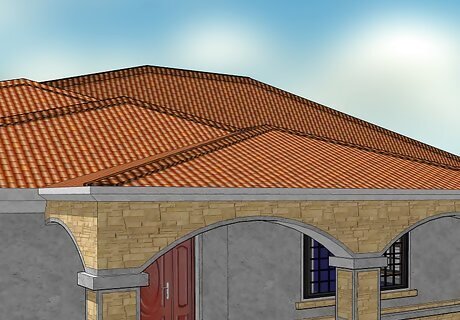
Accentuate the architectural style of your home with your shingles. Drive around several neighborhoods to get an idea of what color of roofing would look best on your home. Look for houses with a similar shape, exterior, and color as yours. Note which roofing and siding pairings seem to look the most appealing to you, and search online for houses that are architecturally similar to yours. For example, a ranch house might look good with a combination of colors while a traditional colonial would benefit from shingles with one solid color. A Spanish style home might look good with reddish clay-colored roof shingles which would mimic traditional clay roofing tiles, for example.
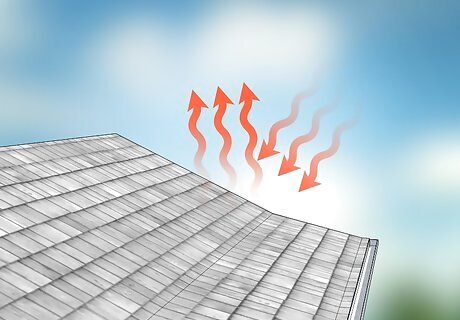
Install a “cool roof” to make your home more energy efficient. Opting for an energy efficient roof can lower the temperature of your attic by 20–40 °F (−7–4 °C). If you live in a warm climate, install this type of roof to help lower your electricity bills and improve the longevity of your roofing materials. If you don’t want to install a true cool roof, remember that white or light shingles reflect sunlight and help keep the temperature of your home down. Dark shingles absorb heat and will help homes in colder climates stay warm. They also help melt snow and ice from your roof. Understanding Cool Roofing According to the U.S. Department of Energy, a cool roof is any form of roofing that is designed to reflect more light than traditional roofing. Some methods of cool roofing involve using reflective paint, installing a covering for the shingles, or simply replacing dark shingles with light shingles.
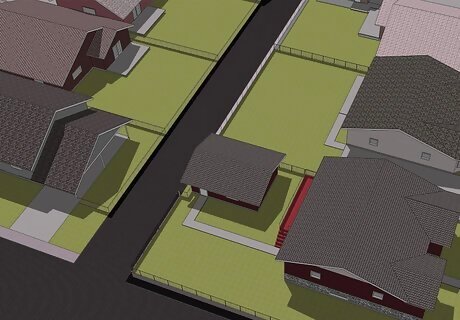
Check rules about shingle colors if you live in a residential neighborhood. If you have a local homeowners association, read their rules carefully to make sure your choice of roofing color does not violate any regulations. Even if you don't have set rules to follow, think about how your roof will look alongside your neighbor's house. If many of the homes in your neighborhood have the same style of roof, it might be a good sign that that color works well with those types of houses.
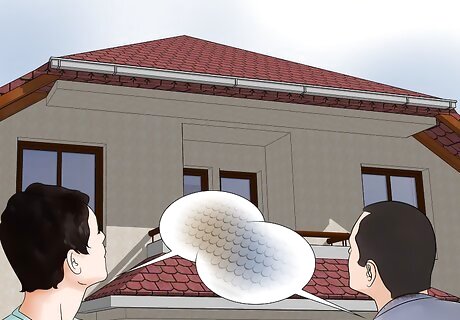
Talk to a certified roofer or contractor about the shingles. Take photos of the exterior of your home to a certified roofer or contractor. Browse options from a catalogue, or take shingle samples home with you to see them in person. If you have a picture of the type of look that you want to achieve, bring that along with you to give them an idea of what you want. If you can’t find a certified roofer or contractor near you, visit a hardware store to view their shingle samples and get an idea of their roofing process. A reputable certified roofer will have a license or certification from your state’s department of labor, and should be able to provide you with proof of liability insurance and a written proposal for the roofing job.
Using Shingles for Design
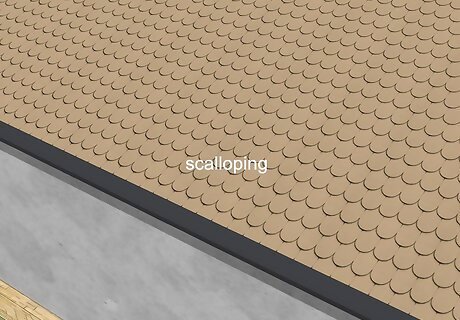
Make a statement with the shingle design or shape. Consult with a shingle designer about incorporating a design into your shingles. Try staggering blues with taupes and browns for a natural-toned roof with a cooler undertone. Ask about scalloping or layering to draw attention to your roof. Keep in mind that high-contrast colors, like gray and cream together, will highlight features of your home while low-contrast colors, like tan and brown together, tend to hide defects.
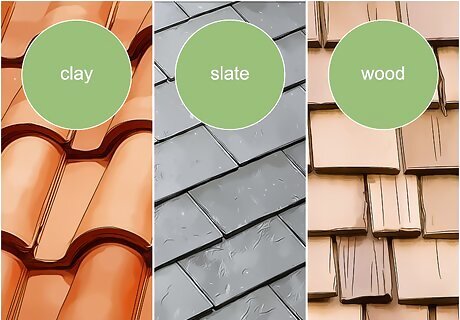
Choose clay, slate, or wooden shingles for an a unique look. Today, shingles are available in a variety of different materials. Visit a store to get a feel for all of the options, and don’t be afraid to choose a shingle type other than asphalt. Keep in mind that asphalt shingles tend to hold up well over time in various climates, while materials like clay and slate can break easily. Remember that shingles made of different materials will usually require an additional installation fee, due to their fragile nature. Exploring Different Shingle Materials Clay: Clay tiles are traditionally shades of red or tan. Most clay tiles are fired in a kiln before being installed, which ensures that they will hold their color for a long time. Slate: This natural rock can be cut into thin shingles and used for roofing material. Slate tends to be quite expensive, and the colors are limited to shades of gray. Wood: Wooden shingles, or shakes, are made from cedar, redwood, or pine trees. They tend to have a natural brown color and are popular in areas of California and the Northwest United States. Wooden shingles are prohibited in some areas due to low levels of fire safety.
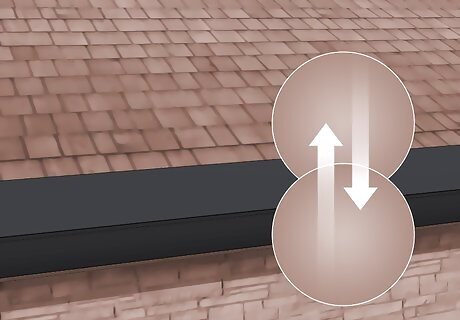
Opt for a color that blends with your siding to make the house seem larger. Low-contrast roofs are ideal for toning down the appearance of your home and making smaller houses look taller. Choose a color that appears to be a continuation of the siding to draw the eye upward. Avoid harsh colors like white or black, which can break the home into sections. For example, if you have a ranch house with brown stone siding, choose shades of brown and taupe for the shingles. For brick houses, this might mean incorporating shades of brown and red in your roof. For houses with natural tones on the outside, stick with gray, taupe, and brown for the roof.
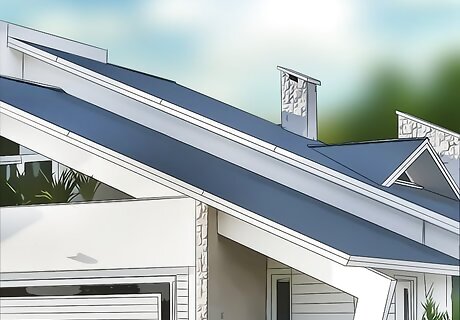
Plan around architectural features, like dormers and sloped roofs. When you’re thinking about adding a new roof, account for the features of your house that make it unique. If your roof is very visible when you’re looking at your home from the outside, take time to think about what would make those features stand out. If you’re having trouble deciding which features to highlight, consult with an architectural designer or roofer to make a decision on your roofing color. For example, if your home has a flat roof, you might consider going for a less visually-appealing option, like concrete or simple gray asphalt.


















Comments
0 comment